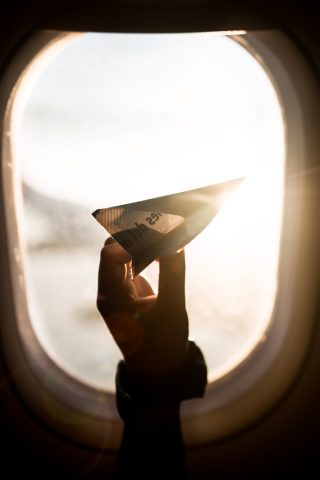Aerospace Engineers Break World Record with High-Performance Paper Airplane

Top 5 summer staycation ideas
June 16, 2023
Virgin fiber vs. recycled fiber?
June 22, 2023
A team of passionate aerospace engineers, including two from Boeing, recently achieved a remarkable feat by designing a paper airplane that shattered the world record for flight distance. Their creation, named Mach 5, soared through the air for an impressive 88 meters, almost the length of a football field. The engineers’ expertise in real aircraft design and their shared love for origami paved the way for this extraordinary achievement.
Dillon Ruble, a systems engineer at Boeing and now the proud holder of the paper airplane record, expressed his joy, stating, “This achievement has truly placed our team on the map, and it is a moment of great pride for our families and friends.”
The Power of Paper
Although aerospace engineers typically work on full-scale airplanes, they found inspiration in the principles that govern both paper airplanes and their larger counterparts. By leveraging the fundamental forces of thrust, lift, drag, and weight, they were able to apply engineering knowledge to devise innovative folding patterns and optimize performance.
The Journey to Success
Dillon Ruble, an engineer from Boeing, recounted the meticulous process that led to their triumph. Over 500 hours were devoted to developing numerous prototypes and refining the design for maximum flight distance. Through constant iteration and incremental improvements, the team fine-tuned each fold, ultimately gaining precious centimeters that would prove vital in setting the world record.
But how are paper planes connected to real-life planes? Well, Ruble enlightens us: “It also serves as a meaningful connection to the aerospace industry, as it requires similar principles of design and prototyping.” Who would have thought?
Choosing the Perfect Paper
To achieve their goal, the engineers experimented with different paper types and sizes. They eventually discovered the Navigator A4 100 g/m² paper. The paper’s unique quality and structure provided the long-awaited structural integrity they were seeking. It was thanks to this feature that the airplane was able to effectively maintain its shape and withstand the forces experienced during flight.
The Fascination of Paper
Beyond its practical applications, paper holds a unique fascination. It enables engineers to test designs and launch techniques with ease, offering advantages such as lightweight construction and adaptability to complex shapes. Moreover, paper retains an intrinsic value, providing a tangible and authentic experience that digital mediums cannot replicate.
Looking Ahead
Rather than resting on their laurels, the engineers are already setting their sights on future challenges. With the next Red Bull Paper Wings competition scheduled for 2025, they eagerly anticipate refining their designs and pushing the boundaries of paper airplane innovation. Their dedication to breaking records not only drives personal growth but also inspires creativity and encourages the next generation of engineering talent.
The incredible achievement of these aerospace engineers in creating a high-performance paper airplane serves as a testament to the fusion of engineering expertise and the art of origami. By combining their knowledge and passion, they not only broke a world record but also showcased the limitless possibilities of paper as a medium for scientific exploration and creative expression.



